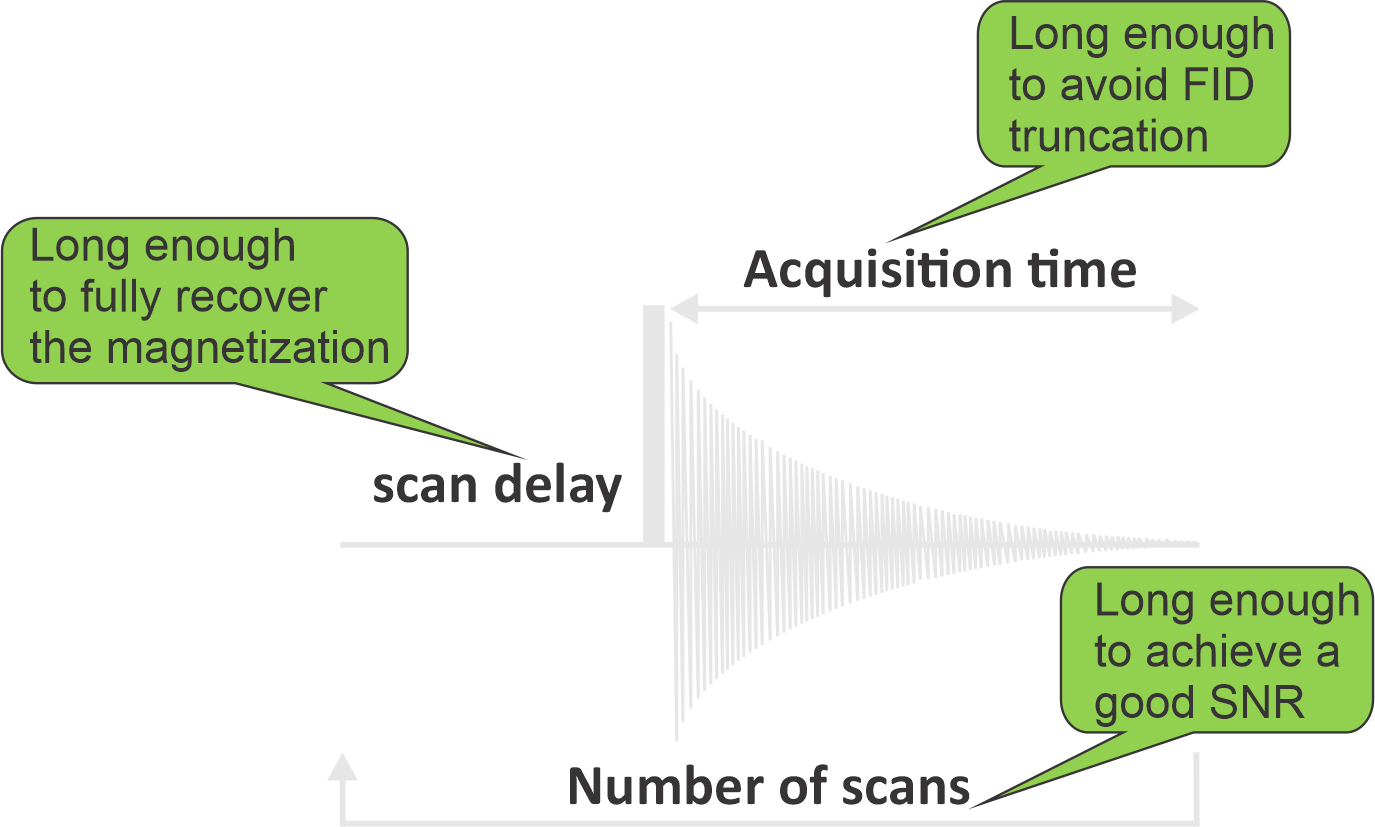NMR acquisition parameters and qNMR
In this blog we will explore how a variety of acquisition parameters can affect the FID and their direct consequence in the spectrum.
Figure 1: Highlights the main three acquisition parameters that the user needs to define precisely in an NMR experiment, especially for quantitative analysis (qNMR).
Before describing the acquisition parameters effects in the spectrum, it is necessary to know where they come from.
Number of points (NP): The FID acquisition does not occur continuously, it is acquired with a certain number of points, and the user needs to define this number. It is straightforward to think that a higher number of points will lead to a better description of the continuous data, but a longer experiment will be mandatory to register them. The spectrum is displayed by tracing a line between the points that describe data.
Spectral width (SW): it is nuclei dependent and represents a range of frequency where you expect to observe signals. For example, for a 1H experiment, it is common to set it between -5 – 20 ppm.
NP and SW are important acquisition parameters because they determine the acquisition time and the FID resolution.
Acquisition time (Acq): represents the duration of the FID, in other words, for how long the magnetization will be detected.
Digital Resolution (DR): it measures how well defined a signal will be. Reducing the SW or increasing the NP will lead to an improvement of DR.
The length of the FID is determined by the parameter acquisition time. A short acquisition time leads to an FID that did not decay to zero at the end, and as a consequence, the corresponding spectrum will show modulations on the peak base, known as sinc wiggles. A very long acquisition time will lead to extra noise being unnecessarily acquired. A good compromise is to acquire around 3*T2*. In this case, 95% of the signal will have decayed away.
For qNMR, it is fundamental that before each scan the magnetization is fully recovered. A repetition time (acquisition time + scan delay) of 5-7*T1 needs to be used to achieve this condition.
Another critical parameter is the proper calculation of the receiver gain. It represents the amplification of your original signal. A low value of receiver gain will lead to a spectrum with poor SNR, whereas a high value of receiver gain will clip the beginning of the FID, and sinc wiggles will be observed in the final spectrum.
Stay tuned! The following blog will deal with post-processing tools; you can check our apodization blog in the meantime.
[1] Larive, C. K. and Korir, A. K. Topic 2.4: How do I choose the right acquisition parameters for a quantitative NMR measurement? in Quantitative NMR. It is an open book and can be accessed here.



